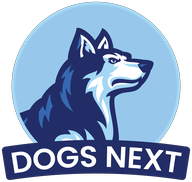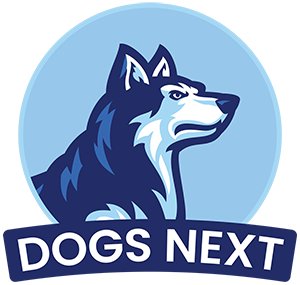Working Line German Shepherds are bred for their physical abilities and work ethic. Show Line German Shepherds prioritize appearance and conformation for dog shows.
German Shepherds are a versatile breed with distinct lines: Working Line and Show Line. Working Line German Shepherds are selected for traits like stamina, intelligence, and drive, making them ideal for tasks such as police work, search and rescue, and protection.
Show Line German Shepherds, on the other hand, are bred for their aesthetics, adhering to the breed standards set by kennel clubs. They excel in dog shows and have a more pronounced, angulated rear. Both lines have their unique strengths and purposes, catering to different needs and preferences of dog enthusiasts.
History And Purpose Of Each Line
German Shepherd Dogs are one of the most popular breeds worldwide, known for their intelligence, loyalty, and versatility. Two distinct lines of German Shepherds exist: the Working Line and the Show Line. Each line has its own unique history and purpose, tailored to specific roles and characteristics.
Working Line German Shepherds
Working Line German Shepherds were originally bred for their utility and performance in demanding tasks. These dogs trace their lineage back to the early 1900s when Max von Stephanitz, the breed’s founder, prioritized traits like strength, endurance, and intelligence. The Working Line is characterized by:
- Superior agility and stamina
- High intelligence and trainability
- Stronger work drive and focus
These qualities make them excellent in roles such as police work, search and rescue, and military duties. Working Line German Shepherds are often more athletic and muscular compared to their Show Line counterparts. They typically have a shorter coat and a more functional build, which enhances their performance in physically demanding jobs.
| Characteristic | Working Line |
| Purpose | Work and utility |
| Build | Functional, athletic |
| Coat | Shorter |
Show Line German Shepherds
Show Line German Shepherds were developed with an emphasis on appearance and conformation. These dogs are bred to meet the breed standards set by kennel clubs, focusing on aesthetics such as the sloped back and angulated hindquarters. Show Line German Shepherds are recognized by their:
- Elegant and graceful appearance
- Distinctive sloped back
- Longer, thicker coat
Although they are also intelligent and trainable, their primary role is to excel in dog shows and competitions. These dogs often have a calmer temperament and are well-suited for family life and companionship. The Show Line is known for its regal and impressive look, which adheres closely to the breed standards.
| Characteristic | Show Line |
| Purpose | Show and companionship |
| Build | Elegant, angulated |
| Coat | Longer, thicker |
Physical Differences
The German Shepherd Dog (GSD) is a beloved breed known for its intelligence, strength, and versatility. Two main types of GSDs exist: Working Line and Show Line. Understanding the physical differences between these two lines helps in choosing the right dog for your needs.
Appearance And Build
Working Line German Shepherds have a more robust and muscular build. They are bred for functionality and stamina. Their bodies are lean, athletic, and designed for hard work.
- Body Structure: Working Line GSDs have straight backs and a square-shaped body.
- Head: Their heads are broader and often more pronounced.
- Legs: Their legs are longer and stronger, enabling them to run and jump efficiently.
Show Line German Shepherds, on the other hand, are bred for appearance. They often have a more sloped back and a more elegant look.
- Body Structure: Show Line GSDs have a more sloped back, giving them a distinctive look.
- Head: Their heads are more refined and less broad.
- Legs: Their legs are typically shorter and not as muscular as Working Line GSDs.
Below is a table summarizing these differences:
| Feature | Working Line | Show Line |
| Body Structure | Straight back, square body | Sloped back, elegant look |
| Head | Broader, pronounced | Refined, less broad |
| Legs | Long, strong | Shorter, less muscular |
Coat And Color Variations
Working Line German Shepherds generally have a more practical coat. It is designed to withstand harsh conditions and rigorous activities. Their coat is usually shorter and denser.
- Coat: Shorter, dense, and less fluffy.
- Colors: Common colors include sable, black, and bi-color.
Show Line German Shepherds have a more luxurious coat. Their coat is longer, thicker, and often more vibrant. They are bred to look good in the show ring.
- Coat: Longer, thicker, and more luxurious.
- Colors: They come in a wider variety of colors, including black and tan, red and black, and even blue.
The table below outlines these differences:
| Feature | Working Line | Show Line |
| Coat | Short, dense | Long, luxurious |
| Colors | Sable, black, bi-color | Black and tan, red and black, blue |
Temperament And Behavior
German Shepherd Dogs (GSDs) are well-known for their intelligence, loyalty, and versatility. They come in two main types: Working Line and Show Line. Understanding their temperament and behavior can help in choosing the right type for your needs. Both lines have distinct traits that make them unique.
Working Line Characteristics
Working Line German Shepherds are bred for tasks like police work, search and rescue, and military duties. Their temperament and behavior reflect their purpose. Here are some key characteristics:
- High Energy Levels: These dogs have boundless energy and need lots of exercise.
- Strong Work Ethic: They are task-oriented and thrive in environments where they have a job to do.
- Intense Focus: Working Line GSDs can concentrate on tasks for long periods.
- High Trainability: They are quick learners and respond well to commands.
- Alertness: These dogs are always on the lookout and are excellent watchdogs.
| Trait | Description |
| Energy Level | Very High |
| Focus | Intense |
| Trainability | Excellent |
| Alertness | High |
Working Line GSDs are best suited for active families or individuals who can provide them with both mental and physical stimulation. Without proper exercise and training, these dogs can become bored and destructive.
Show Line Characteristics
Show Line German Shepherds are bred primarily for appearance and conformation shows. Their temperament and behavior are different from their working counterparts. Here are some key characteristics:
- Moderate Energy Levels: They have lower energy compared to Working Line GSDs, making them easier to manage.
- Calm Demeanor: Show Line GSDs are generally calmer and more relaxed.
- Friendly Nature: They tend to be more sociable and friendly with strangers.
- Trainability: While still intelligent, they may not be as driven as Working Line GSDs.
- Conformation: Bred for their looks, they often have a more sloped back and elegant appearance.
| Trait | Description |
| Energy Level | Moderate |
| Calmness | High |
| Friendliness | More sociable |
| Trainability | Good |
| Appearance | Elegant |
Show Line GSDs are ideal for families looking for a loyal and beautiful companion that is easier to handle. They still require regular exercise and mental stimulation but are generally more adaptable to a relaxed lifestyle.
Training And Exercise Needs
German Shepherd Dogs are known for their intelligence, loyalty, and versatility. They fall into two categories: Working Line and Show Line. Both types have unique training and exercise needs. Understanding these needs is crucial for ensuring your dog remains happy, healthy, and well-behaved.
Working Line Training
Working Line German Shepherds are bred for tasks like police work, search and rescue, and protection. These dogs have high energy levels and strong work drives. They need intense, consistent training to channel their energy and intelligence productively.
Training Working Line German Shepherds involves:
- Obedience Training: These dogs must learn basic commands like sit, stay, and heel.
- Advanced Commands: Commands like search, attack, and track are essential for their work.
- Socialization: Exposure to different people, animals, and environments is crucial.
- Mental Stimulation: Puzzle toys, scent games, and training exercises keep their minds active.
They also need plenty of exercise. A mix of physical and mental activities is vital. Activities such as:
- Daily Walks: At least two long walks each day.
- Running or Jogging: They enjoy running alongside you.
- Agility Training: Agility courses help burn off energy.
- Fetch and Tug-of-War: These games provide physical and mental stimulation.
Here’s a quick comparison table for Working Line training and exercise needs:
| Activity | Frequency |
| Obedience Training | Daily |
| Advanced Commands | Weekly |
| Socialization | Daily |
| Mental Stimulation | Daily |
| Daily Walks | Twice Daily |
| Running or Jogging | Weekly |
| Agility Training | Weekly |
| Fetch and Tug-of-War | Daily |
Show Line Training
Show Line German Shepherds are bred for their appearance and temperament. They are often family pets or competition dogs. Their training needs are less intense than Working Lines but still important.
Training Show Line German Shepherds involves:
- Basic Obedience: Commands like sit, stay, and come are essential.
- Leash Training: They must learn to walk calmly on a leash.
- Socialization: Interaction with other dogs and people is important.
- Show Training: Training for dog shows, including gait and posture.
Exercise needs are moderate but consistent. Activities include:
- Daily Walks: A couple of short walks each day.
- Playtime: Games like fetch and tug-of-war.
- Training Sessions: Regular training sessions for mental stimulation.
- Social Play: Playdates with other dogs for social interaction.
Here’s a quick comparison table for Show Line training and exercise needs:
| Activity | Frequency |
| Basic Obedience | Daily |
| Leash Training | Weekly |
| Socialization | Daily |
| Show Training | Weekly |
| Daily Walks | Twice Daily |
| Playtime | Daily |
| Training Sessions | Weekly |
| Social Play | Weekly |
Suitability For Different Owners
German Shepherds come in two main types: Working Line and Show Line. Each type has unique traits and caters to different owners’ needs. Understanding the suitability of each type helps in making a well-informed decision.
Best Fit For Working Line
Working Line German Shepherds excel in jobs like police work, search and rescue, and protection. They have high energy levels and need constant mental and physical stimulation. Owners who are active and enjoy outdoor activities will find a perfect companion in a Working Line German Shepherd.
- High Energy Levels: These dogs need at least 2 hours of exercise daily.
- Strong Work Ethic: They excel in roles requiring discipline and focus.
- Intelligence: Easily trainable and quick learners.
Families with ample time and space benefit the most. These dogs thrive in environments where they have a job to do. They may not be the best fit for apartment living due to their need for space and activity.
| Trait | Working Line |
| Energy Level | High |
| Training Needs | High |
| Best For | Active Families, Working Roles |
Working Line German Shepherds need owners dedicated to training and exercise. They are not suited for sedentary lifestyles.
Best Fit For Show Line
Show Line German Shepherds have a calmer demeanor compared to their Working Line counterparts. They are bred to meet specific physical standards and excel in dog shows. These dogs are ideal for owners who enjoy participating in dog shows or want a family pet with a gentler temperament.
- Calmer Temperament: Less demanding in terms of exercise.
- Social Nature: Friendly and good with children.
- Appearance: Bred for specific physical traits.
Show Line German Shepherds fit well in family settings. They are suitable for apartment living if given regular exercise. Their calm nature makes them great companions for less active owners.
| Trait | Show Line |
| Energy Level | Moderate |
| Training Needs | Moderate |
| Best For | Families, Show Enthusiasts |
Show Line German Shepherds are great for those who want a loyal, loving pet without the intense exercise needs. They also excel in show rings, making them a versatile choice.
Health Considerations
The German Shepherd Dog, a popular breed, comes in two main lines: Working Line and Show Line. Each line has unique traits, especially in health. Understanding these differences is crucial for potential owners. This section explores the health considerations of both lines.
Common Health Issues
Both Working Line and Show Line German Shepherds are prone to certain health problems. However, their health issues may vary due to their breeding purposes.
Working Line German Shepherds are bred for tasks like police work and search and rescue. They tend to have fewer health problems because breeders focus on functionality and strength. Common health issues in Working Line German Shepherds include:
- Hip Dysplasia: A genetic condition where the hip joint doesn’t fit properly.
- Elbow Dysplasia: Similar to hip dysplasia but affects the elbow joint.
- Degenerative Myelopathy: A progressive disease of the spinal cord.
Show Line German Shepherds are bred for appearance and conformation shows. They often face health issues due to selective breeding for certain traits. Common health issues in Show Line German Shepherds include:
- Hip Dysplasia: More prevalent due to their sloped back.
- Bloat: A serious condition where the stomach fills with gas.
- Pancreatic Insufficiency: The pancreas fails to produce enough enzymes.
The table below summarizes the common health issues:
| Health Issue | Working Line | Show Line |
| Hip Dysplasia | Common | Very Common |
| Elbow Dysplasia | Common | Less Common |
| Degenerative Myelopathy | Common | Less Common |
| Bloat | Less Common | Common |
| Pancreatic Insufficiency | Less Common | Common |
Lifespan And Care
Working Line German Shepherds generally have a lifespan of 9-13 years. They require regular exercise and mental stimulation due to their high energy levels. To ensure their health:
- Provide daily physical activity like running or hiking.
- Engage them in mentally stimulating activities.
- Regular veterinary check-ups.
- Maintain a balanced diet.
Show Line German Shepherds also have a lifespan of 9-13 years. They may require different care due to their different health issues and lower energy levels. To ensure their health:
- Provide moderate exercise to prevent obesity.
- Ensure they have a comfortable resting area.
- Regular grooming to maintain their coat.
- Frequent health check-ups to monitor common conditions.
The table below highlights the care differences:
| Care Aspect | Working Line | Show Line |
| Exercise | High | Moderate |
| Mental Stimulation | High | Moderate |
| Grooming | Moderate | High |
| Health Check-ups | Regular | Frequent |
Frequently Asked Questions
Which Is Better, Showline Or Working Line In Gsd?
Choosing between Showline and working line GSD depends on your needs. Showline excels in appearance and temperament. Working line shines in performance and tasks.
What Is The Difference Between A Working Dog And A Show Dog German Shepherd?
A working dog German Shepherd excels in tasks like police work, search and rescue. A show dog German Shepherd focuses on appearance, conforming to breed standards.
What Line Of German Shepherd Is The Best?
The best line of German Shepherd depends on your needs. For work, choose the working line. For companionship, the show line is preferred.
What Is A Working Line Dog?
A working line dog is bred for specific tasks like herding, guarding, or police work. These dogs have high energy, intelligence, and strong work ethics.
Conclusion
Choosing between a working line and a show line German Shepherd depends on your lifestyle and needs. Both lines have unique traits. Working lines excel in performance and tasks. Show lines shine in appearance and companionship. Consider what fits best for you.
Your ideal German Shepherd is out there!

I’m David, an expert contributor and writer, with two furry friends of my own, I know the challenges of raising and caring for dogs. From training to nutrition and health, my goal is to provide valuable insights and advice to help create strong bonds and happy, healthy lives. Find me in Twitter.




